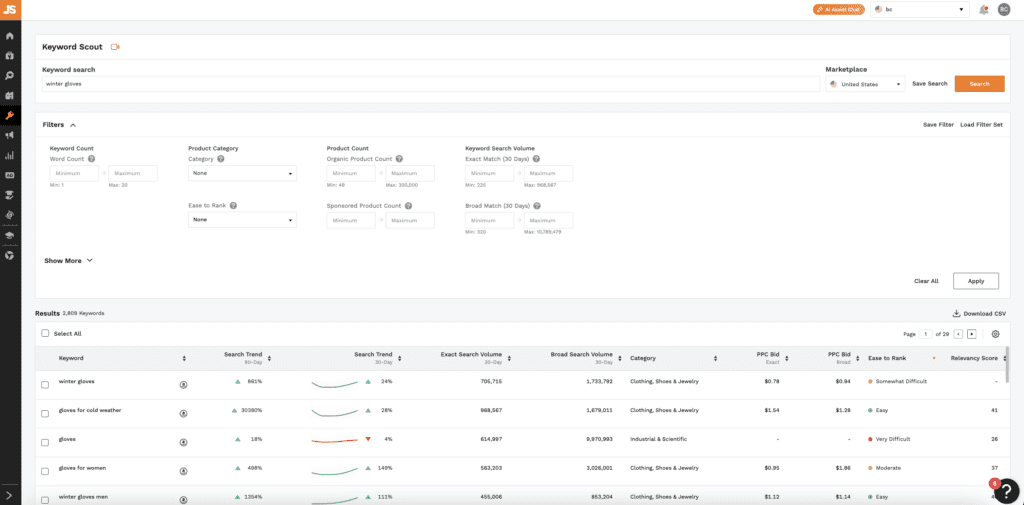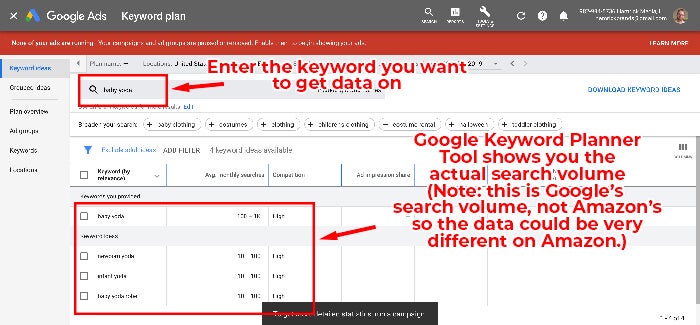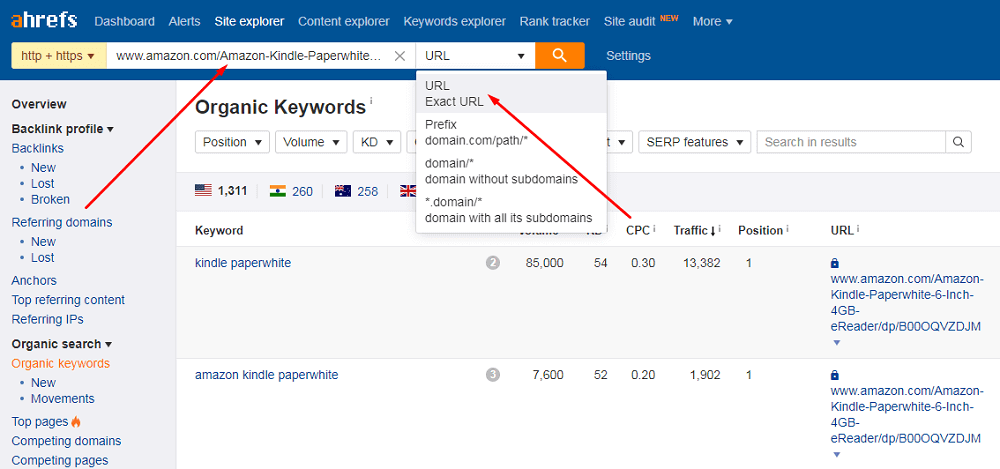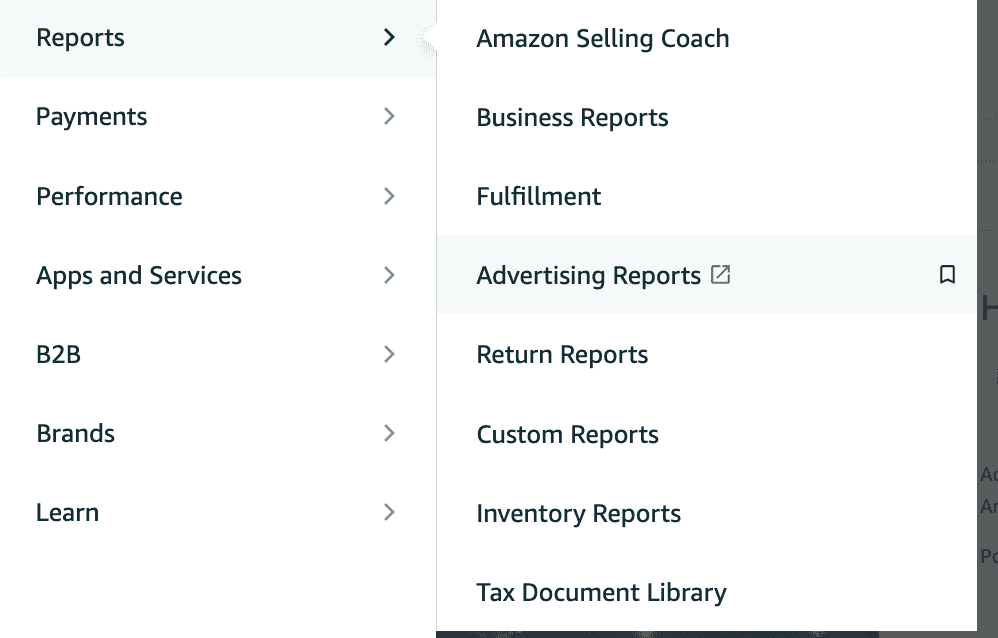Keyword research is an essential part of your Amazon product launch. Investing the time to properly assess the most important keywords in your niche can maximize your revenue potential. It may position your product to be the highest-ranked item for valuable search queries.
But it’s a science and an art!
If you’ve ever seen Amazon product listings with the super-long, keyword-stuffed, one-size-fits-all, uber-optimized product title, you may wonder what human would actually read such a title and be convinced to purchase the product.
This is a valid question. Humans don’t naturally like long sentences.
But this is where the (unknown) science comes in. Amazon’s algorithm finds value in those ridiculously worded titles.
In the above example, you can see that the seller has loaded their listing with dozens of keywords!
Sellers use these long titles so that their products show up in more searches for more keywords. They perform keyword research to identify the exact search terms they want to target. By incorporating variations into their title, description, bullet points, FAQs, and even images, they improve their chances of being seen by potential customers.
But does this keyword strategy actually work? It does, however, there is also a LOT more to know about Amazon keyword strategy.
In this post, we’ll explore:
- Why Amazon keyword research is so important for your success on Amazon;
- The different tools you can use to find the best keywords for your product;
- How to use keywords to attract more buyers, sell more units, and ultimately generate more revenue;
- And what you need to know about keyword planning before you get started.
Why is Amazon keyword research important?
Imagine for a second that Amazon is that friend you go to any time you need a product recommendation.
For the most part, Amazon is pretty good at recommending products to you. However, they always seem to lack confidence. After they recommend something, they need you to confirm that what they recommended is exactly the item for which you were looking.
In essence, that’s how search engines work.
They’re great at guessing what you need but aren’t confident about it at first. It’s not until many many thousands of people have told them that what Amazon suggested is the correct answer do they start to believe you. Until then, they have to go by whatever descriptive terms they’ve been given, and those descriptive terms are called keywords.
When you first launch a product on Amazon, keyword research should be your primary focus. When Amazon’s algorithm determines that your keyword is relevant for a particular product search, it places your product higher in the search results.
This placement on the search results page is known as your ranking.
So just how big of a deal is it to rank?
Jungle Scout asked over 1,000 consumers about their online shopping behaviors and discovered the following:
- 73% of shoppers click on the top listing in search results
- 14% of shoppers click on the second listing
- 5% of shoppers click on the third listing
That adds up to 92% of all clicks on the search page. The remaining 8% of clicks are spread throughout the remainder of the product listings.
What does that mean in dollars and cents?
Imagine that there is $100,000 worth of monthly sales tied to a particular keyword. The seller with the top product will earn $73,000 of the sales. Second place will take $14,000. And third will take $5,000.
That leaves $8,000 to be shared among the rest of the listings. (Imagine there are another 100 listings for that keyword; that’s only $80 in sales per seller per month.)
It’s crucial that your product ranks high!
What do you need to know about Amazon keyword research?
Okay, sure. There are a lot of moving parts to Amazon keyword research. Fortunately, this article is going to cover everything you need to know, so you’ll be a master in no time.
Amazon is a search engine
Amazon is one of the largest search engines in the world for ecommerce and general product inquiries. In fact, 66% of U.S. consumers start their product searches on Amazon.
For that reason, Amazon users are extremely purchase-focused. They enter the search term for what they want to buy, find it, and check out. And since they aren’t there to search randomly, they want maximum speed and efficiency.
Amazon uses its own internal advertising system called Amazon PPC
Next, it’s key that you understand that Amazon’s search engine has its own system for advertising called Amazon Pay-Per-Click (PPC).
As a seller, you can use Amazon PPC to promote your products by placing bids on clicks for your product listings. If your bid is higher than your competitors’, your product will appear higher in the search results with the “sponsored product” badge on it.
So while your new product may not be able to appear at the top of the search results organically — meaning the product’s position based on its natural ranking factors (see below) — by spending money on ads, your product can jockey for a top spot and make more sales.
Amazon uses multiple keyword ranking factors
So what does Amazon consider when it places your product in a top spot?
While Amazon isn’t exactly giving away the “secret sauce” to their algorithm’s coding, we have discovered that there are a number of factors that helps a product position high in Amazon’s search results, including:
- The number of customers that add your product to their shopping carts.
- The volume of sales you have made with the product in the past.
- Your product’s unit/session percentage rate:
- This is a special formula Amazon uses to gauge your product’s viability. To calculate the unit per session, Amazon divides the number of units your product has sold by the number of visits to the page (the “sessions”).
- For example, if 1,000 shoppers visit your page and you sell 200 units, your unit per session percentage rate is 200/1,000, or 20%.
- The number and rating of your reviews:
- Amazon only wants to show the best-rated products on their search pages in order to guarantee customer satisfaction.
- Your product’s relevancy (based on its title, bullet points, and description).
Some of these factors require time to build as your product gets more sales, but increasing your listing’s relevancy is something immediately within your control.
And how do you do that? With keywords!
There are quantitative ways to know exactly which keywords you should include in your listing to maximize your relevancy for the most profitable search queries.
So let’s explore some of the tools and strategies to find these keywords!
Amazon keyword research tool #1: Keyword Scout
While there are a couple of free options out there for tools (detailed below), if you want a silver bullet to keyword success (see the importance to your bottom line above!), we recommend Jungle Scout’s Keyword Scout.
How does Keyword Scout work?
With Keyword Scout, you can instantly generate thousands of high-converting, top ranking keywords to get your product noticed on Amazon.
Keyword Scout pulls actual advertising data directly from Amazon, and once you enter a keyword phrase or ASIN (Amazon’s standard identification number; a unique tag given to a product once it’s listed on Amazon), it displays information related to that keyword.
In addition, it generates other keywords related to your search.
Here are just a few of the questions you can answer using Keyword Scout:
- In addition to the entered keyword or ASIN, what other relevant keywords are there? (Keyword Scout displays dozens of additional keywords related to your search or ASIN)
- How many exact match searches are there been for the keywords in the last 30 days? (Exact matches are searches on Amazon that use a specific keyword or phrase with no variation)
- How well is the keyword trending? Jungle Scout offers two types of trending information: 30-day and 90-day. We take the current keyword volume for the phrase and divide it by the keyword volume from the previous period (either 30-day or 90-day respectively) to arrive at these percentages.
How to use Keyword Scout
Allow me to demonstrate how easy it is to use Keyword Scout, and how you can generate powerful new keywords in seconds.
First, you’ll want to log in to your Jungle Scout account. Once there, click on the Keywords header on the left-hand side, then click Keyword Scout from the list that appears. Finally, enter in a keyword or product ASIN to generate keywords for.
We’re going to use the term “winter gloves.”

As you can see, Keyword Scout came up with 2,809 keywords for “winter gloves.” It shows us that the 30-day search volume keyword “winter gloves” is 705,715 searches on Amazon.
Use the advanced filters Keyword Scout offers to narrow down your keyword search. For example, I set a minimum of 1,000 broad match searches and it narrowed down my results to 1,638 keywords. Now, I’ll only see relevant keywords that receive at least 1,000 searches per month.
Once you’ve generated a list of new keywords, you can learn a lot more about them by viewing the data in Keyword Scout’s various columns.
In addition to being a powerful keyword research tool, Keyword Scout also complements Jungle Scout’s product research tools. For instance, it offers insights into advertising spend for a given keyword — as you can see above, the “Exact” and “Broad” PPC bids for “ice chest” are $0.78 and $0.94, respectively.
What can you do with this information?
Let’s assume that it takes an average of 10 ad clicks to make a sale on Amazon, for a product that sells for $30. That means the total ad cost per sale will be $7.80 for Exact terms and $9.40 for Broad terms (10 x $0.78 and 10 x $0.94, respectively).
So, when you start estimating the costs for a product you hope to sell on Amazon, you can pencil in $6.60 to $8.10 for your marketing costs.
The 2.5% Rule
A good rule of thumb I like to use for guessing ad costs is to assume that the bid costs Keyword Scout shows me are worth approximately 2.5% of the product’s sales price on Amazon. As for the sales price, I determine that by dividing the average cost-per-click by 0.025 (or 2.5%).
For example, if Keyword Scout shows me that the average ad bid is $0.50, then I try to price my product around $20 ($0.50 divided by 2.5% is $20.00).
Inversely, you can check to see if the competition is high or low using this same rule.
If we find that the average price for products similar to mine is priced at $20.00, and the average bid price is $1.00 per ad click, we can divide the average ad price by the average sales price to get our ad click percentage.
And if the ad cost per click percentage rate is higher than 2.5%, that means the product might be in a competitive niche and ad costs will be high. Vice versa, if the ad cost per click percentage rate is equal to or lower than 2.5%, then competition for the product is low.
Again, this is a rule of thumb. Be sure to examine your costs and metrics before you make a decision.
Amazon keyword research tool #2: Google Keyword Planner
Google’s Keyword Planner is a free tool that shows you estimated search volumes for any word or phrase. It can also help you find other related phrases.
With troves of data available via Google’s search engine, you can also segment the information by geography. This is extremely helpful if you are selling on Amazon UK or another non-US Amazon site.
To get to the Google Keyword Planner, you have to create a free AdWords account. But, you won’t need to create any active campaigns or spend any money.
Once you have created your account, you can find the Keyword Planner under the Tools tab, or you can go directly to https://ads.google.com/aw/keywordplanner
As for pulling relevant keywords from the Planner, there are several helpful methods you can use.
Start with some main keywords
If we drop in some main keywords, or “head terms”, we can start surfacing other search phrases that may be useful.
The strategy here is to start with the main keywords, like “baby yoda”, and then drill down into more specific long tail keywords people are searching for, like “baby yoda robe” or “baby yoda plush”.

As you can see from the screenshot above, you can find some vital data that way. (Keyword — by relevance — is the list of keywords most-relevant/related to the keywords you entered; in this case, it’s “baby yoda.”)
A very important thing to note regarding average monthly searches that are shown on the Google Keyword Planner: the search volumes you see on Google Keyword Planner do not equal those you will find on Amazon.
However, you can assume that the volume will be relatively similar. And it will help you prioritize which keywords will get you the most traffic on Amazon.
When it comes to the Competition and Suggested Bid columns, they are more specific to creating an Adwords campaign and aren’t exactly relevant to helping you create an optimized Amazon listing.
But, if you get to the point where you have created your own website off of Amazon and want to drive paid traffic to the page, it is certainly valuable information you’ll want to have.
Check out a competitor’s page
If you are unsure of which keywords may be relevant, you can start your keyword research by referencing a competitor’s site. Just think up some relevant competitive products and let Google work its magic!
Amazon keyword research tool #3: Ahrefs Site Explorer
While Ahrefs Site Explorer is mostly used for backlink analysis, this tool has many more use cases and keyword research on Amazon is one of them, especially if you want to learn from successful Amazon sellers.
Here’s how it works. Go to Amazon, find a popular product page that you compete with, paste the URL into Site Explorer, and choose “URL” as the search mode.

Ahrefs will reveal the keywords sending organic traffic to the page. That way, you’ll be able to optimize your own page with juicy keywords that drive some traffic from best-selling items to yours.
Since a popular page on Amazon can rank for hundreds or even thousands of keywords, it’s worth using the built-in filters to narrow them down.
Additional sources for Amazon keyword research
If your business is already live on Amazon, you can download a list of search queries that make sales from your manual and automatic campaigns. By viewing this list, you may come across keywords that you may never think of, but customers are searching for.
When you choose broad keyword targeting, Amazon will show your ads when customers search for something similar to your target keyword — that’s why you may see different keywords within the search terms report.
However, since the targeting can be fairly broad, we don’t want to pay for clicks targeting the wrong traffic.
Regardless, you may come across some good keywords that you didn’t identify when initially creating your product listing.
You can access your search term reports in Seller Central by going to Reports > Advertising reports, and click on Create report.


In conclusion
Set yourself up for success by finding the keywords with the highest demand! As you can see, these are all useful tools and provide helpful data to craft your keyword-optimized listing.
If you’d like to learn about other tools successful Amazon sellers are using, check out our 2023 State of the Amazon Seller Report. Or, if you have tools you’ve found useful in your keyword research that aren’t mentioned here, please share them in the comments, as we would love to learn of other resources!

 94 Comments
94 Comments
94 comments on “The Top Tools for Amazon Keyword Research in 2024”